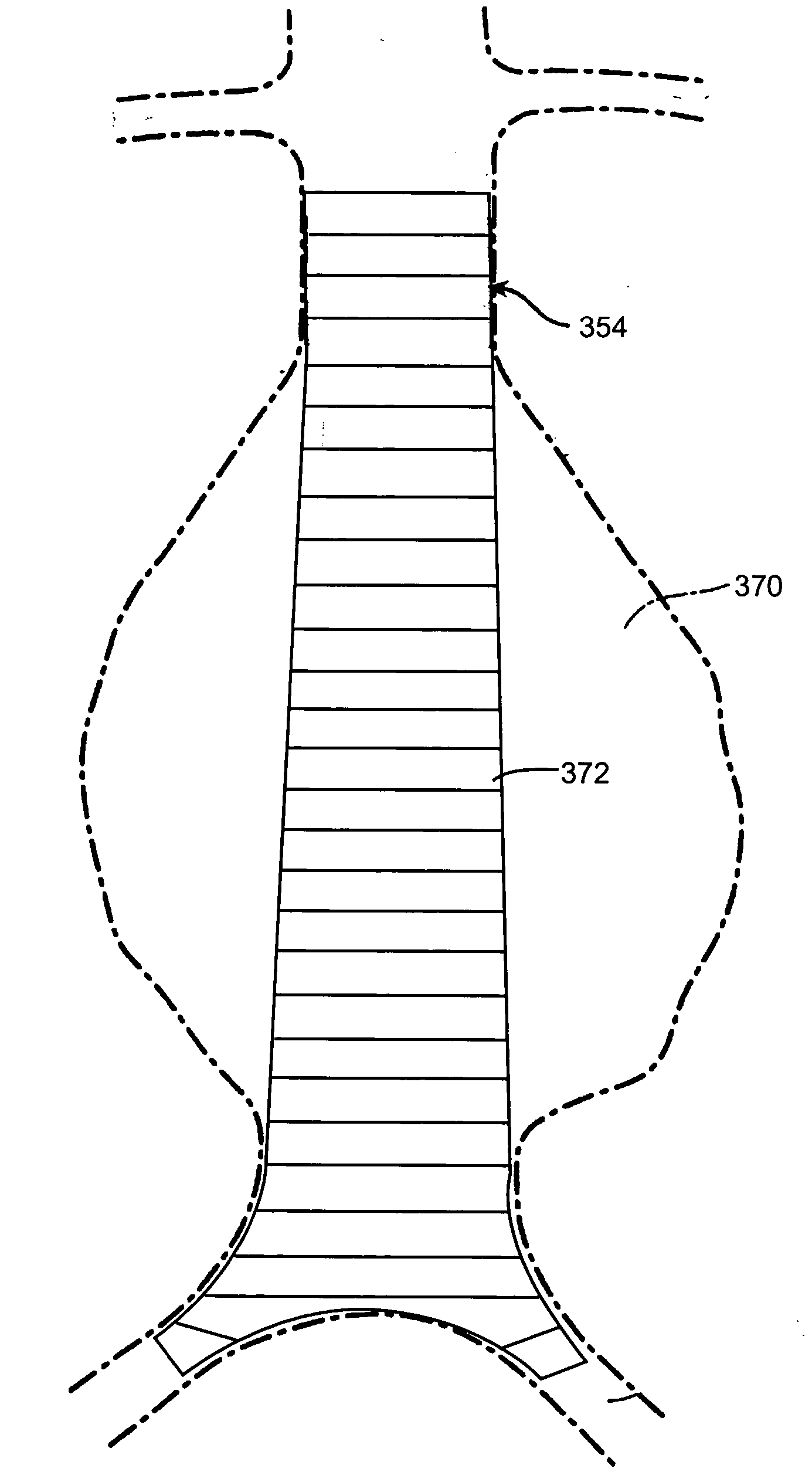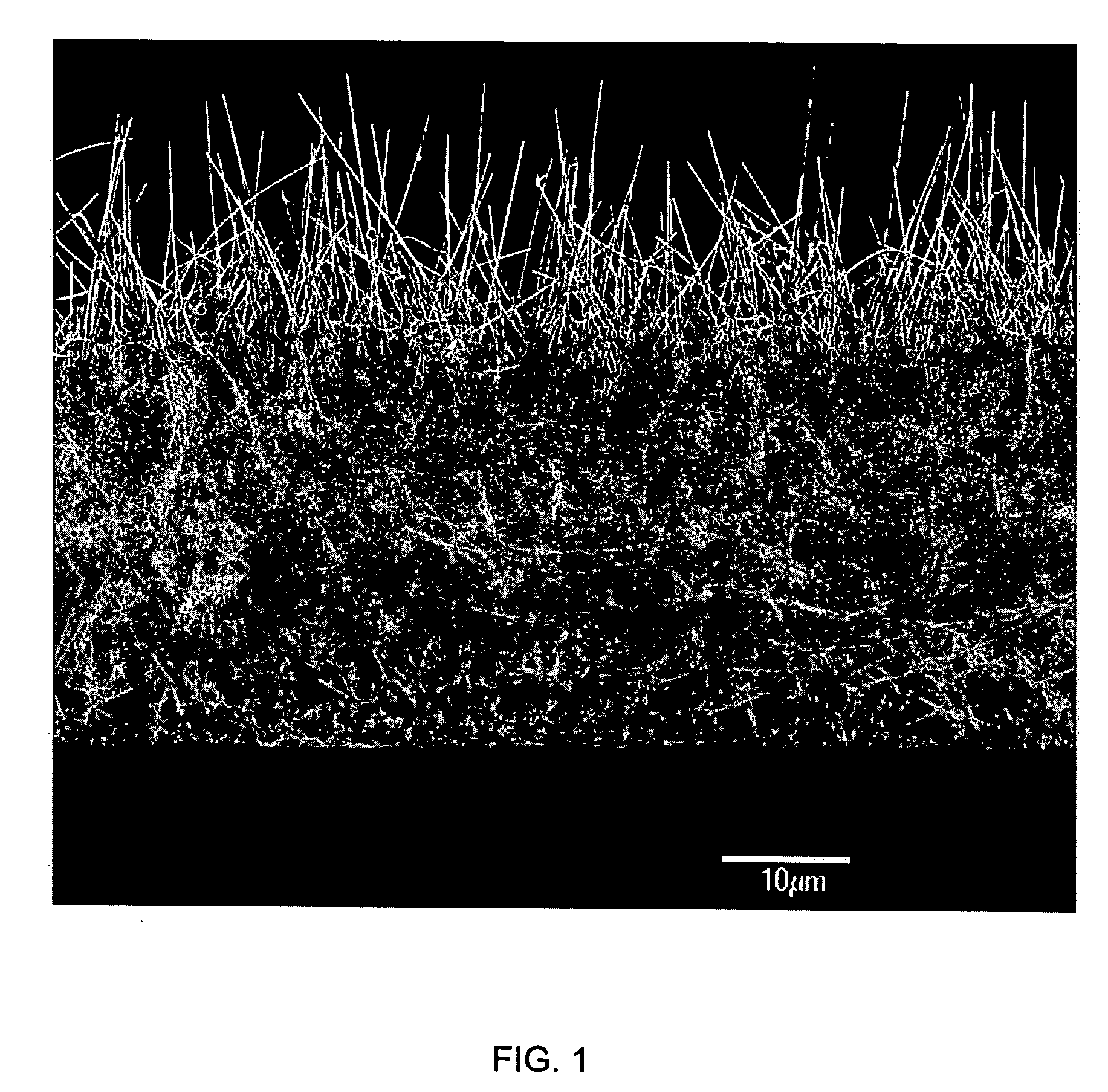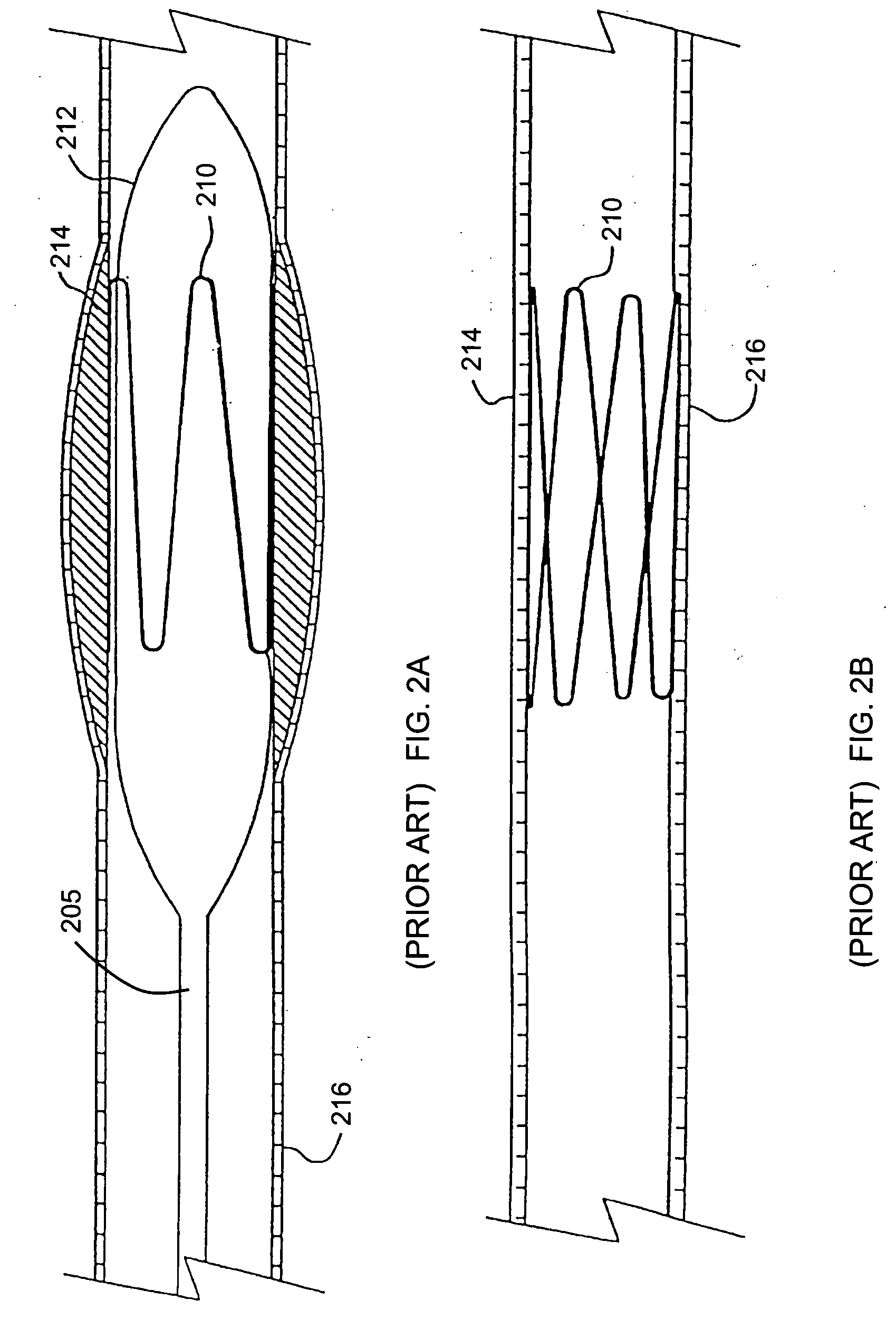[0006] The embodiments of the current invention comprise various medical devices, such as clamps, valves, intracorporeal or
extracorporeal devices (e.g., catheters), temporary or permanent implants, stents, vascular grafts, anastomotic devices,
aneurysm repair devices, embolic devices, and implantable devices (e.g., orthopedic implants) and the like which comprise
nanofiber enhanced surfaces. Such enhanced surfaces provide many enhanced attributes to the medical devices in, on, or within which they are used including, e.g., to prevent / reduce bio-
fouling, increase fluid flow due to hydrophobicity, increase adhesion, biointegration, etc.
[0007] In a first aspect of the invention, a
medical device is disclosed comprising a body structure having one or more surfaces having a plurality of nanostructured components associated therewith. The
medical device may comprise an intracorporeal or
extracorporeal device, a temporary or
permanent implant, a
stent, a
vascular graft, an anastomotic device, an
aneurysm repair device, an embolic device, an implantable device, a
catheter, valve or other device which would benefit from a nanostructured surface according to the teachings of the present invention. The plurality of nanostructured components may comprise, for example, a plurality of nanofibers or nanowires. The plurality of nanostructured components enhance one or more of adhesion, non-adhesion, friction, patency or biointegration of the device with one or more tissue surfaces of a body of a patient depending on the particular application of the device. The nanofibers (or other nanostructured components) on the surfaces of the
medical device can optionally be embedded in a slowly-soluble biocompatible
polymer (or other) matrix to make the nanofiber surfaces more robust. The
polymer matrix can protect most of the length of each nanofiber, leaving only the ends susceptible to damage. The generation of
water soluble polymers can be accomplished in a number of different ways. For example, polymer chains can be formed in situ in a dilute
aqueous solution primarily consisting of a
monomer and an
oxidizing agent. In this case, the polymer is actually created in the solution and subsequently spontaneously adsorbed onto the nanofiber surfaces as a uniform, ultra-thin film of between approximately 10 to greater than 250 angstroms in thickness, more preferably between 10 and 100 angstroms.
[0014] In another embodiment of the invention, a bioengineered
scaffold device for providing a
scaffold for nerve regeneration is disclosed which comprises a base membrane or matrix having a plurality of nanostructured components associated therewith. The membrane or matrix may be made from one or more of the following materials: natural or synthetic polymers, electrically conducting polymers, metals, alloys, ceramics, glass fabrics, or
silicone. The plurality of nanostructured components may comprise, for example, a plurality of nanofibers or nanowires. The nanostructured surface of the membrane or matrix may be impregnated or bound with one or more drugs, cells, fibroblasts, nerve growth factors (NGF),
cell seeding compounds, neurotrophic growth factors or
genetically engineered cells producing such factors, VEGF,
laminin or other drugs or substances to encourage axonal elongation and functional nerve performance.
[0019] Methods of use are also disclosed for treating patients with any one or more of the medical devices disclosed herein, which include, for example, a method of therapeutically treating a patient comprising contacting the patient with a medical device comprising a surface and plurality of nanofibers associated with the surface. Methods are disclosed for administering a
drug compound to a body of a patient which comprises, for example, providing a
drug-eluting device comprising at least one surface, a plurality of nanofibers associated with the surface, and a
drug compound associated with the plurality of nanofibers; introducing the drug-eluting device into a body of a patient; and delivering the
drug compound into the body of the patient. The drug-eluting device in one embodiment comprises a
coronary stent, although any device which would benefit from local
drug delivery at the site of
disease (e.g.,
lesion) could be used in the methods of the invention. Where a
coronary stent is used as the drug-eluting device, the
drug compound may comprise
paclitaxel or
sirolimus, for example, or a variety of other medications including without limitation one or more of the following: anti-inflammatory immunomodulators such as
Dexamethasone, M-
prednisolone,
Interferon,
Leflunomide,
Tacrolimus, Mizoribine, statins, Cyclosporine,
Tranilast, and Biorest; antiproliferative compounds such as Taxol,
Methotrexate, Actinomycin, Angiopeptin,
Vincristine, Mitomycin, RestenASE, and PCNA
ribozyme; migration inhibitors such as Batimastat,
Prolyl hydroxylase inhibitors,
Halofuginone, C-proteinase inhibitors, and
Probucol; and compounds which promote healing and re-endothelialization such as VEGF,
Estradiols, antibodies,
NO donors, and BCP671. The
drug compound may be adsorbed directly to the nanofiber surface of the drug-eluting device or otherwise associated with it via the use of one or more
silane groups,
linker molecules or other covalent, ionic, van der waals etc. attachment means. The nanofiber surface may be configured such that the drug compound elutes slowly over time. The plurality of nanofibers optionally are embedded in a biocompatible, non-thrombogenic
polymer coating to provide enhanced durability to the nanofibers.
 Login to View More
Login to View More  Login to View More
Login to View More 


